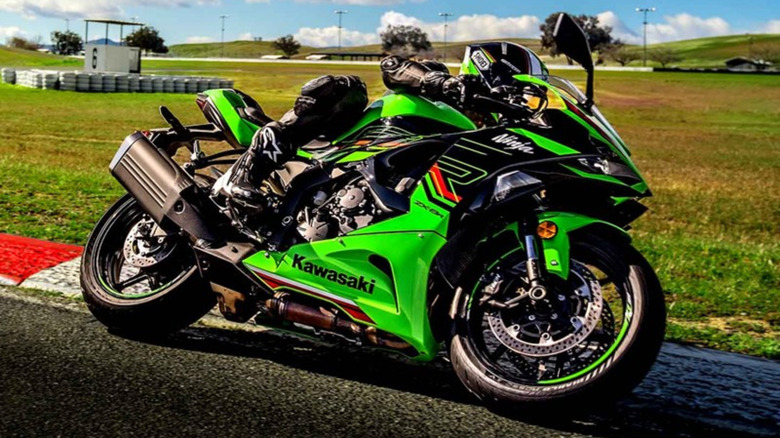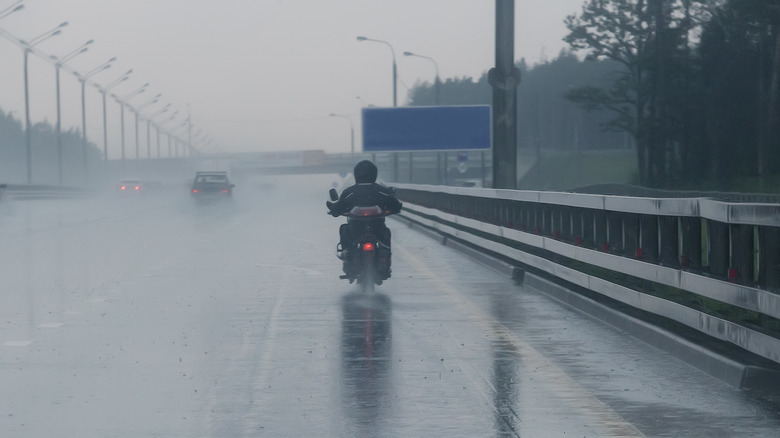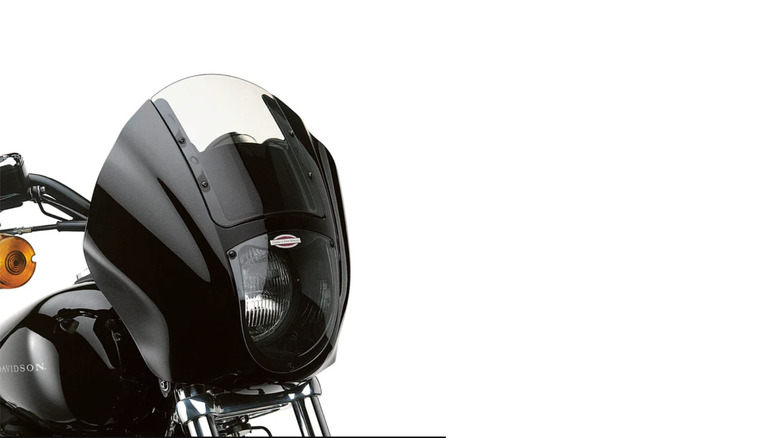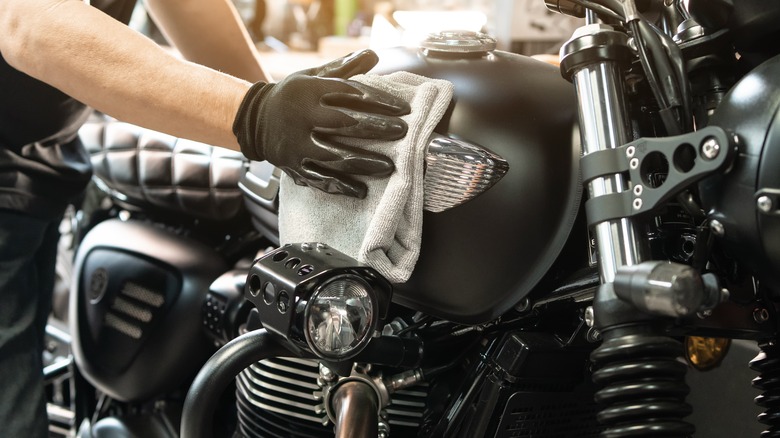Do You Need Motorcycle Fairings? Pros And Cons Explained
Fairings are made of plastic, fiberglass, carbon fiber, or aluminum , and come in different types, from full fairings that cover the entire front and sides of the motorcycle to quarter fairings (also known as bikini fairings) that cover just the headlight and can extend into a windscreen. While buying a fully-faired motorcycle or installing a quarter fairing on a naked bike might seem like a simple aesthetic choice, the fact is that they can make a substantial difference to the performance and handling of a bike, especially when riding on highways or traveling at high speeds. In fact, fairings are now considered almost essential for many types of motorcycles, such as sports and touring bikes.
But despite the many benefits they offer, faired bikes aren't always the right choice. Ultimately, you'll want to consider your riding style, aesthetic preferences, and motorcycle maintenance habits to decide whether or not a fairing will make a positive impact on your riding experience. To help you make an informed decision, we've taken an unbiased approach to examining the pros and cons of motorcycle fairings below.
Reduces aerodynamic drag and improves fuel efficiency
The primary purpose of a fairing is to cut aerodynamic drag, which is the resistance your bike faces due to the air when you're in motion. The amount of resistance you face will only increase as you ride faster, and this increased drag causes your engine to work harder to maintain the same speed. At high speeds, this can have a serious effect on your motorcycle's fuel efficiency.
Aerodynamic drag increases when there is more surface area. That's why naked bikes that don't have a streamlined design and body panels to smooth out the airflow face more drag. Additionally, if you end up wearing riding gear and accessories, those pieces of gear add to the surface area, making it all the more difficult for you to maintain your speed against the increasing wind resistance.
It makes sense that if you expect to ride your motorbike at high speeds over long distances on a regular basis, it's best to purchase a fully-faired motorcycle. The fairing will create a more sleek frontal area that will allow the air to flow over and around your motorcycle more smoothly. This reduces the overall drag on your motorcycle and improves your fuel efficiency.
When you're riding in an urban area at lower speeds, there isn't much drag to begin with, so a fairing won't really help improve your fuel efficiency.
Protection from the elements
Motorcycle fairings can also improve your ride quality and comfort by shielding your body from the effects of wind resistance. Having cold air hit your body directly when you're riding on the highway can be physically taxing — and that's the last thing you want if you've a long way to travel. The fairing deflects air around your sides and over your head; this reduces some of this strain on your body, leading to less fatigue.
Additionally, a motorcycle fairing can also angle the oncoming air enough to provide you with at least some degree of protection from debris, insects, and rain. This is particularly helpful if you're riding in poor weather conditions or have to deal with bugs flying into your helmet. Even something as simple as a bikini fairing can have a significant effect on your comfort when riding.
The benefits of a faired motorcycle are obvious, so why would anyone choose to ride a bike without a fairing?
Fairings are expensive to replace
Fairings can lead to some fuel-efficiency savings if you live your life in the fast lane, but the cost of replacing a fairing if it's damaged can be prohibitive. While fairings don't crack too easily, they're not unbreakable. If you're involved in an accident, your fairing can get damaged and may require replacing. While it is possible to repair cracked fairings yourself, this can be difficult, messy, and lead to aesthetically questionable results, so it's often better to buy a replacement. The cost depends on your motorcycle's make and model, but it's not uncommon for aftermarket fairings to cost over $500.
Your insurance might cover some of the costs, but you'll need to account for the deductible if you're at fault. Additionally, if your insurance provider denies your claim, you'll have to pay for the new fairing entirely on your own. Given that motorcycle ownership already involves quite a few expenses in terms of purchasing the right gear, maintaining and servicing the motorcycle, and paying for insurance, it's important to consider whether the additional expense that might arise due to a damaged fairing is worth it.
Difficult to maintain
Full fairings, while great at adding aesthetic value to your motorcycle and cutting down on aerodynamic drag, also make it hard to keep your motorcycle clean and might themselves get pretty dirty, especially if you've been riding in bad weather. If your faired motorcycle is only in need of a quick clean-up, a wipe-down is usually all that's required.
However, deep cleaning a fully-faired motorcycle is more challenging. Owners on online forums often report that dust and grime have a tendency to settle under the panels, making the motorcycle harder to clean properly. If you don't want to take the fairing apart yourself (and it's recommended that you don't if you lack the necessary tools and expertise), you'll need to take your bike to a local garage to remove and replace the panels. On the other hand, a naked bike, with all its exposed nooks and crannies, may seem more challenging to clean at first glance. However, in most cases, a good soak in cleaner liquid, some gentle scrubbing, and a hose down are all that's required to get it clean. Most people, even those new to motorcycles, will find this easy to do on their own.




